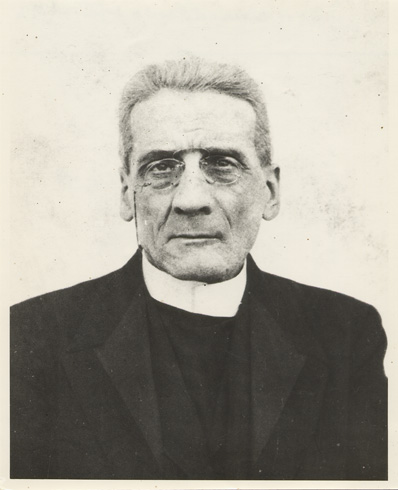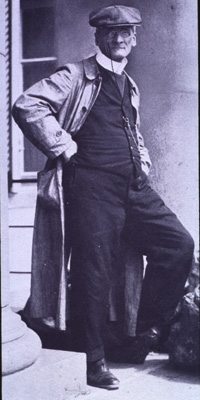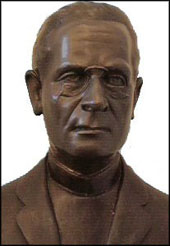<Back to Index>
- Volcanologist Giuseppe Mercalli, 1850
- Pianist Gina Bachauer, 1913
- Prince of Canino and Musignano Lucien Bonaparte, 1775
PAGE SPONSOR



Giuseppe Mercalli (May 21, 1850 - March 19, 1914) was an Italian volcanologist.
Born in Milan, Mercalli was ordained a Roman Catholic priest and soon became a professor of the Natural Sciences at the seminary of Milan. He was removed from the professorship when he was suspected of liberalism for openly supporting a national monument to honor the great philosopher - priest Antonio Rosmini - Serbati.
Subsequently the Italian government appointed him a professor at Domodossola, followed by a post at Reggio di Calabria and finally a post at the Naples University. He was also director of the Vesuvius Observatory until the time of his death. Among his pupils was Giuseppe Moscati.
He is best remembered today for his Mercalli scale for measuring earthquakes which is still used today. The Mercalli scale, unlike the more famous Richter scale, does not measure the actual energy released by an earthquake but how much effect an earthquake had on a given area, making it poorly suited for measuring earthquakes in sparsely populated areas, but ideal for comparing damage done by various tremors. The Mercalli scale, which has been widely used in earthquake engineering, gives a rating from I to XII, where I is felt only by a very few and XII has near total damage, few or no masonry structures remain standing, and objects are thrown into the air.
In 1914 Mercalli burnt to death under suspicious circumstances, allegedly after knocking over a paraffin lamp in his bedroom. He is thought to have been working through the night, as he often did (he once was found working at 11 AM when he had set an examination, upon hearing which he replied, “It surely can't be daylight yet!”), when the fatal accident occurred. His body was found, carbonized, by his bed, holding a blanket which he attempted to use to fend off the flames. The authorities, however, stated a few days later that the professor was quite possibly murdered by strangling and soaked in petrol and burned to conceal the crime, because they determined that money worth about $1,400 at the time was missing from the professor's apartment.
Giuseppe Mercalli also witnessed the eruptions at the Aeolian Islands of Stromboli and Vulcano. It is his description of these two volcanic eruptions which is used by volcanologists the world over. Mercalli
was the author of two intensity scales. The first of these (Mercalli,
1983), was according to Davison (1921) a mere adaptation of the Rossi - Forel scale.
It has six degrees unlike the ten degrees of the Rossi - Forel scale.
Nowadays this scale is largely forgotten. Mercalli's second scale
(Mercalli, 1902), has ten degrees (unlike the 12 degrees that are
wrongly and largely publicited in many internet webpages) and is
basically an expansion of the descriptions states in the Rossi - Forel
scale. In 1904 the ten-degree Mercalli scale was expanded to twelve degrees by Italian physicist Adolfo Cancani;
he added two extra degrees at the top of the scale (the degrees XI
(catastrophe) and XII (enormous catastrophe)). It was later completely
re-written by the German geophysicist August Heinrich Sieberg and became known as the Mercalli - Cancani - Sieberg (MCS) scale. The Mercalli - Cancani - Sieberg scale was later modified and published in English by Harry O. Wood and Frank Neumann in 1931 as the Mercalli - Wood - Neumann (MWN) scale. It was later improved by Charles Richter, the father of the Richter magnitude scale. The scale is known today as the Modified Mercalli scale or Modified Mercalli Intensity scale, and abbreviated MM or MMI.